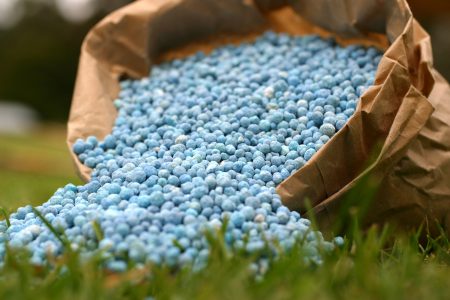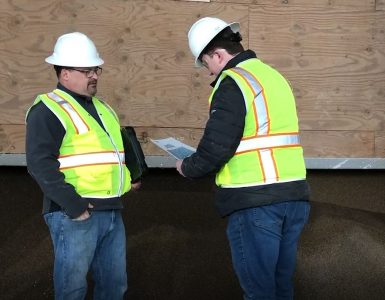How to Select the Right Dust Control for your Fertilizer Facility
Be sure to keep five key components in mind.
During the entire fertilizer manufacturing process, including storage and bagging, fertilizer faces many threats that can impact its effectiveness and shelf-life. One of the most dangerous problems is fertilizer dust. Fertilizer dust can create health risks for facility workers, increase a facility’s potential for combustion fires, and lead to compromised product. In short, without a fertilizer dust control solution in place, fertilizer dust can have substantial, long-term negative impacts for your facility. Fertilizer dust control is a guaranteed way to protect product, mitigate risk, and protect your company’s bottom line. It’s a smart and necessary investment for any facility.
Types of fertilizer dust control
Essentially, there are two primary ways to control fertilizer dust – collection and suppression. Dust collection involves using a machine or system to capture and dispose of the dust. Dust collection methods include exhaust hoods, duct systems, dust collectors, and fan or motor systems. Though these options have some pros, they can be costly, their safety is very questionable, and there’s no universal standard governing these products.
On the other hand, dust suppression is a proactive solution that stops the flow and transport of dust before it becomes a problem that needs to be cleaned up. Dust suppression uses one of four types of spray systems – water only, water-based, petroleum-based, and synthetic. Dust suppression is the more effective fertilizer dust control option because it stops dust from becoming airborne and has a dust emissions reduction rate of 99% or higher.
So, it’s clear – dust suppression is the way to go. But when selecting a fertilizer dust control option for your facility, it should accomplish the following five goals:
Five key components to look for
Maintain fertilizer integrity
Effective fertilizer dust control should ensure that your fertilizer product remains potent and powerful until it reaches the end user. Often, this means it creates a coating around each granule that stops the flow of moisture from the atmosphere to the granule. Fertilizer dust control shouldn’t break down or compromise any of the fertilizer’s key ingredients, and it shouldn’t change your fertilizer’s makeup in a way that makes it any less compliant with regulatory requirements.
All in all, it should stop the formation of dust, which will protect your workers, your facility, and your equipment.
Maintain fertilizer flowability
Fertilizer flowability is important. This is a critical measure of a product’s accuracy and capability[1]. Ineffective fertilizer dust control might expose fertilizer to moisture and humidity, which reduces flowability and causes caking. Caking sacrifices the quality and integrity of the product and also leads to chemical reactions and inadequate cooling. Caked fertilizer is hard to handle and store, and it eventually spoils.
An anti-caking fertilizer dust control agent creates a protective barrier around each granule that keeps them separated. Some fertilizer dust control agents are specifically designed to prevent caking. But even in the event that a specific agent isn’t formulated for this purpose, it should never, under any circumstances, cause caking.

Flowability is key to fertilizer quality.
Handle dust control through multiple handling points
Fertilizer dust control should control dust for the life of the material. It should work equally well during manufacturing, storage, transport, and bagging. At no point should there be a sacrifice in quality. A dust control coating should be applied once, and from that point, there should be little cause for worry or additional sprays. Whereas dust collection is an ongoing process that must be regulated, dust control coatings can be used without disrupting or adding to current processes.
Keep costs economical
Fertilizer dust control should be economical. Your facility shouldn’t see a major increase in expenditures to protect your product and your people. Dust collection methods, which include the purchase and installation of bulky equipment and require consistent maintenance and monitoring, can be expensive and inconvenient. When you consider the size and scale of a warehouse facility, it could take several units to adequately control dust. Not to mention the additional costs to repair and maintain these units, plus training staff and dedicating manpower to the monitoring process.
By comparison, dust suppression is easier to use and doesn’t always require updates to the current structure and operation of your facility. Quite often, the dust suppressants can be applied using an existing spray system, and if one is needed, a simple, small, cost-effective system can usually achieve the desired levels of dust control.
Provide on-going service
Not only do you need to consider a dust control solution’s performance and compatibility with your products; you also need to think about the company providing the solution and servicing your facility to be sure it is a good fit for your needs. Fertilizer dust control is a key component of your product’s marketability, customer experience, and effectiveness, so finding a partner that understands your specific concerns and is willing to work with you on an on-going basis is of utmost importance.
Oftentimes, fertilizer dust control programs need lab tests and trials prior to beginning a relationship with a supplier, so look for a company that is willing to conduct these exercises at no-cost or at a reduced cost. Be sure upfront that once the trials are complete, and the fertilizer dust control program is up and running, your partner is going to perform regularly scheduled maintenance visits and provide you with on-going field service reports to ensure the program is performing up to your quality standards. A reputable, service-oriented partner is essential to the success of a fertilizer dust control program.

It is important to find a dust control partner that will provide on-going monitoring, service, and maintenance.
In conclusion, fertilizer dust control is an important investment for your facility that should not only prevent the spoiling of your product, but also make it stronger. Before making an investment, you should research how the fertilizer dust control agent will impact your product’s integrity and longevity, and how those effects will apply across every touch point in the product’s lifecycle. Additionally, you should find an option that provides on-going support and works with your facility’s budget and financial goals.
If you are looking to achieve all the above goals and more, MinTech offers several powerful fertilizer dust control coatings . MinTech’s MinTerra product line is an industry-leading suite of agents that are perfect for any facility and fertilizer type. To explore all MinTech’s fertilizer dust control solutions, visit mintech.com/minterra.
[1] Fulton, John and Port, Kaylee. (2019). Physical Properties of Granular Fertilizers and Impact on Spreading. Retrieved from: https://ohioline.osu.edu/factsheet/fabe-5501
